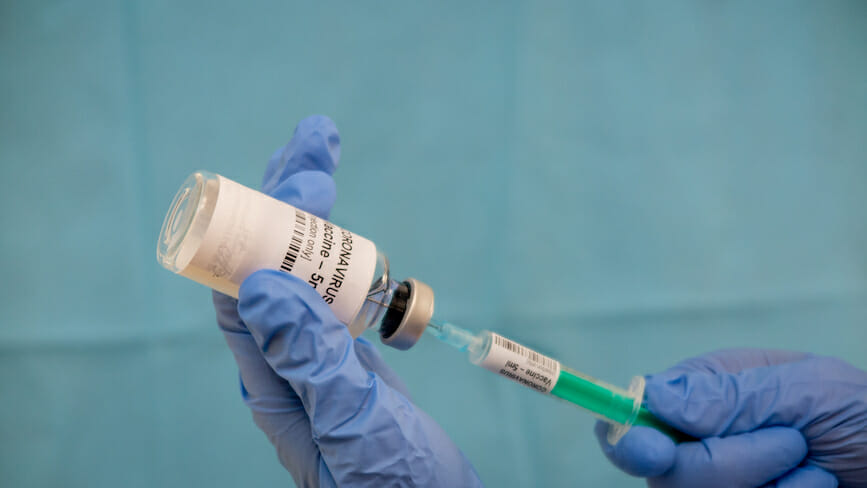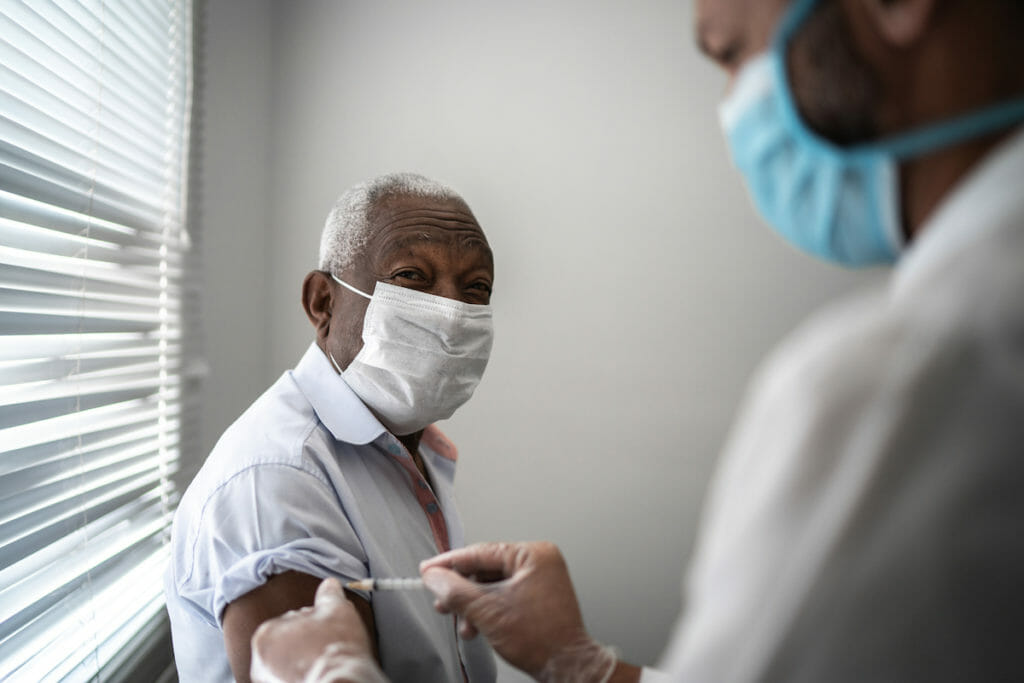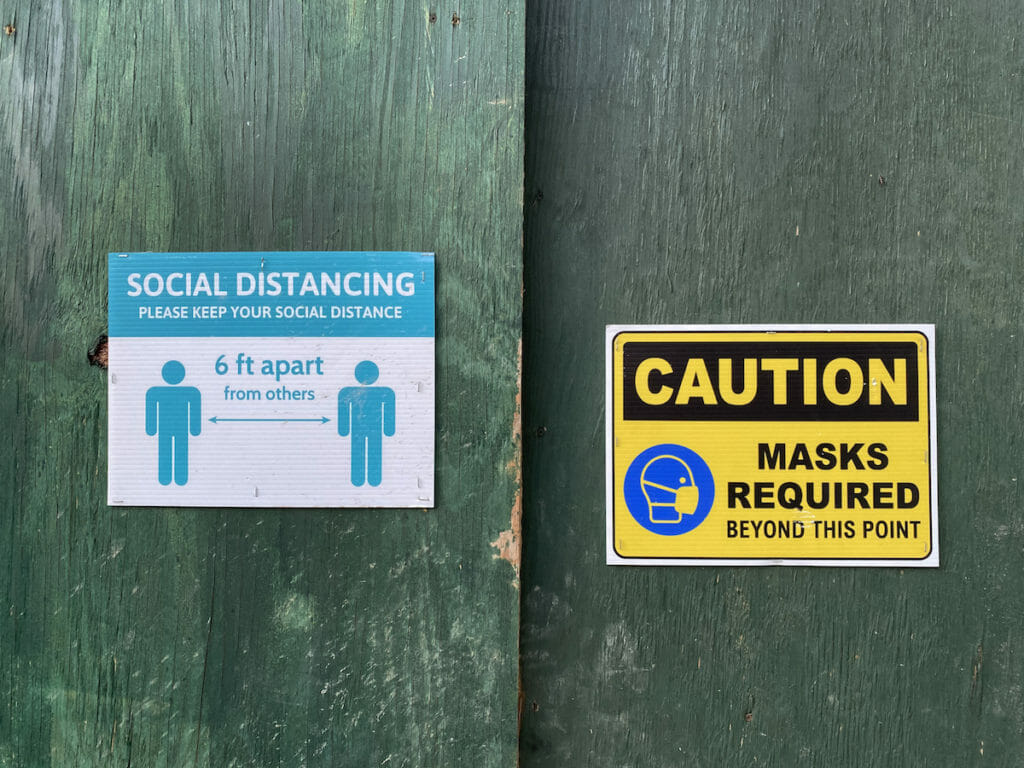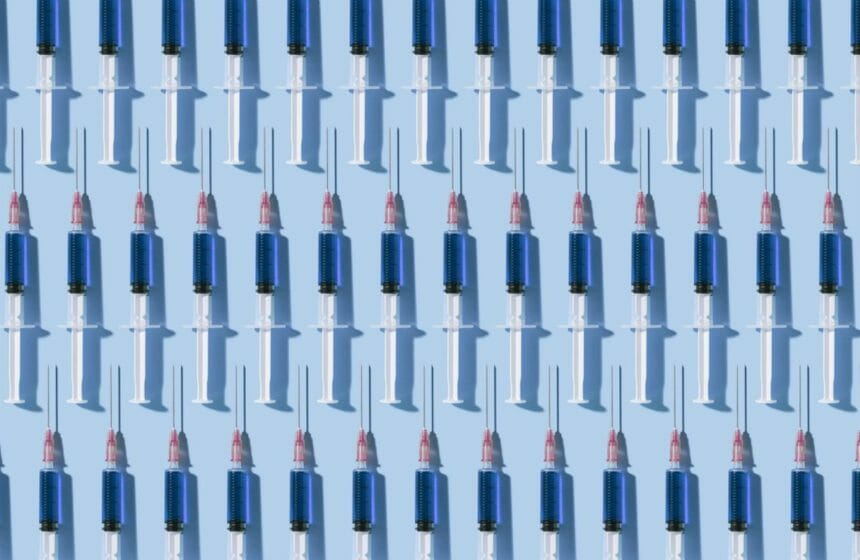“Widespread adoption of the COVID-19 vaccine is our generation’s ‘moonshot’ and will represent one of the largest public health interventions in our nation’s history. By bringing together the worlds of communications, public health and policy, we can transform life as we know it today and save hundreds of thousands of lives.” – Lisa Sherman, Ad Council president and CEO
Less than a year after the first outbreak of COVID-19 was reported in Wuhan, China, two vaccines to prevent the disease are poised for approval and several more are moving diligently through clinical trials. The astonishing speed of vaccine development in the face of a global pandemic will likely be remembered as an epic achievement of science and commerce. The need is dire: at this writing, the COVID-19 toll exceeds 63 million cases worldwide, more than 13.5 million of them in the United States. In 2020 the disease has claimed nearly 1.5 million lives globally and more than 268,000 in the US. The winter ahead looks bleak.
Dr. Anthony Fauci, who has become an iconic voice of science and reason throughout the pandemic, describes vaccines as the “cavalry” that is coming to our rescue. The two vaccines that will soon be approved, initially for emergency use in priority populations, have proved to be 94% to 95% effective in preventing disease in clinical trials involving tens of thousands of subjects.
But vaccines can’t do their job unless people are ready and willing to receive them. The next and perhaps most critical phase of our public response to the pandemic will be making a convincing case to our local, national and global communities in favor of vaccination. Why it all matters: The World Health Organization estimates that 60% to 70% of the population needs to have immunity to COVID-19—either through vaccination or natural infection—to achieve herd immunity and break the chain of transmission.
The Ad Council, in partnership with the COVID Collaborative, have just announced a $50 million public education campaign to achieve widespread immunization. Funding will be sought from private sector foundations and businesses.
In this Special Edition of the Haymarket Media Coronavirus Briefing, we take a close look at the vaccines, the planned rollout, the obstacles that stand in the way of public acceptance and the educational messaging that will be needed.
The science
Two COVID-19 vaccines could be in early deployment within the next couple of weeks. Others are not far behind.
- Pfizer/BioNTech and Moderna applied for emergency use authorization with the Food and Drug Administration (FDA) in November, citing 95% and 94% efficacy, respectively, for their vaccines. Brian Park covered both of these developments in MPR.
- An FDA Advisory Committee will review the Pfizer/BioNTech vaccine on December 10 and the Moderna vaccine on December 17.
- The two vaccines are the first of a new type of vaccine based on messenger RNA (mRNA). Instead of injecting a weakened or killed virus into the body, mRNA vaccines teach cells “how to make a protein—or even just a piece of a protein—that triggers an immune response,” as the Centers for Disease Control and Prevention explains.
- Several other vaccines using a variety of platform technologies are in the pipeline. A Novavax protein subunit vaccine has been designated for fast-track review by the FDA. Phase 3 trials are under way in the UK and will start soon in the US and Mexico. Novavax is also working on a combination flu/COVID-19 vaccine for use after the pandemic.
- AstraZeneca, in partnership with Oxford University, is conducting late-stage clinical trials of a viral vector vaccine in the UK and Brazil. Brian Park reports on its progress in MPR.
- Janssen/Johnson & Johnson has parallel Phase 3 trials under way for both a single-dose vaccine (up to 60,000 participants) and a two-dose vaccine (up to 30,000 subjects). The vaccine uses a viral vector technology that has been incorporated in a recently approved Ebola vaccine.
- Sanofi and GlaxoSmithKline have a recombinant protein-based vaccine that will be ready to seek regulatory review in 2021. Sanofi is also partnering with Translate Bio on an mRNA vaccine.
- Merck is conducting early clinical trials for two COVID-19 vaccines, including one in collaboration with the nonprofit IAVI (International AIDS Vaccine Initiative). The Merck-IAVI vaccine uses the same recombinant vesicular stomatitis virus (rVSV) technology used in Merck’s Ebola vaccine.
- Manufacturers are seeking approval in many countries – as well as Emergency Use listing from the World Health Organization – that would make the vaccines available in low-income countries. Globally, the WHO notes, there are 48 COVID-19 vaccine candidates undergoing clinical evaluation.
The takeaway
Several COVID-19 vaccines may be available within the next six to 12 months, a state of affairs that would’ve been unthinkable when a pandemic was declared just nine months ago.

The rollout
The US government says that 40 million vaccine doses could be available by the end of the year — enough to give 20 million people two doses—with additional supply available to immunize 25 million people each month into the spring of the new year. The government has contracts for 100 million doses of each of the two soon-to-be-approved vaccines.
- What will the government’s vaccination campaign look like? The logistics and messaging will need to be “flexible, nonpartisan and definitely not boring.” Thomas Moore lays it all out in PRWeek.
- Take a further peek inside the expert thinking on how vaccination should be prioritized, from an emergency virtual meeting of the Advisory Committee on Immunization Practices on Tuesday. The ACIP voted to include healthcare personnel as well as long-term care residents in the first priority group (group 1a) for COVID-19 vaccination.
- The ACIP didn’t vote on these but the suggested priority 1b group includes essential workers (the education sector, food and agriculture, utilities, police, firefighters, corrections officers and transportation). Group 1c would include all adults with high-risk medical conditions and all adults 65 and older.
- Beyond public health advice, governors and state health officials are expected to play a pivotal role in vaccine distribution.
- Deployment of COVID-19 vaccines will pose some practical challenges for small medical practices and rural clinics. Lina Zeldovich offers details in The Medical Bag.
- Distribution of the Pfizer/BioNTech vaccine, which must be stored and transported at -70°C, will require an entirely new supply chain, Will Green writes in Supply Management.
- The Department of Health and Human services is partnering with both large chain and community pharmacies to distribute COVID-19 vaccines, and has developed plans to reach out to senior living communities, Alicia Lasek and Lois A. Bowers report in McKnight’s Senior Living and Long-term Care News.
- You can’t deliver vaccines without hundreds of millions of vials. There’s a race to produce them as well.
The takeaway
Inventing and making the vaccine is step one. Distributing it is number two. The third step? Getting it into people’s arms.

The challenges
The speed with which COVID-19 vaccines have been developed is reassuring to some but unsettling and even a turn-off to others. The nation’s and the world’s vaccine prep will require a strong dose of reassurance.
- In a Gallup poll taken in late October, 58% said they would take the COVID-19 vaccine, up from 50% in September but down from 66% in June.
- In a recent survey fielded by the COVID Collaborative, 86% of Americans believed that a vaccine will be effective in curbing the virus – but only 34% said they will definitely get vaccinated themselves.
- A survey conducted by the COVID Collaborative, NAACP and UnidosUS reports that only 14% of Black Americans and 34% of Latinx Americans trust that a vaccine will be safe. Only 18% of Black Americans and 40% of Latinx Americans trust that a vaccine will be effective.
- The National Medical Association, an organization of Black physicians, has appointed a COVID-19 Task Force to evaluate vaccines and therapeutics in an effort to “take the politics out of vaccine development.” At least seven states have said they will be conducting their own reviews and making recommendations.
- Pivotal moment just ahead: Gaining acceptance from the first people who will receive the vaccine: doctors and nurses, more than a few of whom want more data on safety and side effects.
- A survey of nearly 4,000 seniors, another priority group, shows some vaccine hesitancy as well, Kimberly Bonvisutto reports in McKnight’s Senior Living. The vast majority, 85%, plan to take the vaccine at some point; 47% will do so within one month but one-third want to wait at least three months. Among the 15% with no plans to get vaccinated, the vast majority cited concerns about side effects. Approximately six in 10 respondents in the senior survey believe they will have to pay for a vaccine, “despite assurances from public health authorities that the vaccine will be offered at no cost.”
- One reason why nursing homes and assisted living centers need to be high on the vaccine priority list: COVID-19 deaths among residents and staff in US long-term care facilities have surpassed 100,000, Kimberly Bonvisutto, Amy Novotney and Danielle Brown report in McKnight’s Senior Living and McKnight’s Long-Term Care News. That’s 40% of all COVID deaths in the country.
The takeaway
Vaccine success will hinge not only on gaining widespread public buy-in but also on managing expectations. This includes a heads-up on likely side effects, especially for vaccines that require individuals to return for a second dose 21 to 28 days later.

The messaging
It’s all about trust and confidence in the messengers.
- The Ad Council/COVID Collaborative campaign, aiming for its first messaging in early 2021, will focus on a few key strategies, including: addressing misconceptions and concerns about vaccine safety and effectiveness; uniting trusted messengers, influential voices and large-scale platforms around consistent, research-based messaging; tailoring communications to reach diverse audiences through strategic media placements and community-based outreach; and reinforcing the importance of wearing face masks
- What you say and how you say it matter. Axios offers a revealing take on “the words that actually persuade people on the pandemic.” Pollster Frank Luntz says, If we don’t get this language right, people will die.”
- The Ad Council/COVID Collaborative campaign intends to dovetail with government public health campaigns. Here’s how HHS and the CDC are laying the groundwork for Vaccine Information for You and Your Family.
- The Ad Council is not new to this kind of effort: It launched a nationwide polio vaccination campaign in the 1950s.
- In the survey of 4,000 seniors mentioned above, conducted among subscribers to the SilverSneakers newsletter, the most trusted sources of vaccine information were primary care physicians (78%), the CDC (68%), National Institutes of Health (64%), FDA (63%), health plans (63%) and pharmacists (53%).Trust was lower for state and local authorities, 49% and 44%, respectively.
- In the survey of Black and Latinx Americans, 72%of Blacks and 66% of Latinx respondents expressed trust in their health-care provider in matters of decision making. Blacks said they would be twice as likely to trust a source of information of their own ethnicity.
- Factors such as peer group reinforcement, free access to vaccines, and a desire to protect the health of vulnerable family members could help build trust and drive vaccine uptake, the COVID Collaborative reports.
- Other factors that influence vaccine hesitancy include the likelihood of adverse effects from the vaccine, the duration of its protection, overall efficacy, and who is endorsing it, Cassandra Pardini reports in MPR.
- A six-minute HHS video on COVID-19 vaccine featuring Dr. Fauci, FDA Commissioner Stephen Hahn and Operation Warp Speed chief scientific adviser Moncef Slaoui is offered on the website of the Immunization Action Coalition.
- The WHO has a helpful Q&A about COVID-19 vaccines on its website.
- Medical Bag offers a primer on how clinicians can explain the concept of herd immunity to their patients.
- 128 hospitals and health systems across the country have united in an effort called Every Mask Up, emphasizing core public health advice.
- Bruce Springsteen, Jon Stewart and Jon Bon Jovi have teamed up to send this billboard message to fellow New Jerseyans: “Wear a friggin’ mask.”
- Alas, COVID myths persist. Medical Bag tells how to dispel a dozen of the most common.
The takeaway
Vaccines alone won’t be enough. Vaccines might be the cavalry, but more horses will be needed to keep the enemy at bay through the coming winter. Now is not the time for COVID battle fatigue. We need a second wind propelled by the public health measures we can count on the fingers of one hand—wear masks, avoid crowds, wash our hands, keep our distance. Is there an app for common sense?
Take care, be safe, good people, and we’ll see you back here tomorrow – that’s right, tomorrow – with another edition of the Haymarket Media Coronavirus Briefing.
“Partnering across key stakeholders—federal and local leaders, healthcare professionals, community organizations and others—will be critical for promoting equitable access to vaccines. Equitable vaccine access requires not only effective distribution to every community but also clear and accurate communication from those that the community can trust.” – Mark McClellan, former FDA Commissioner and member of the COVID Collaborative







